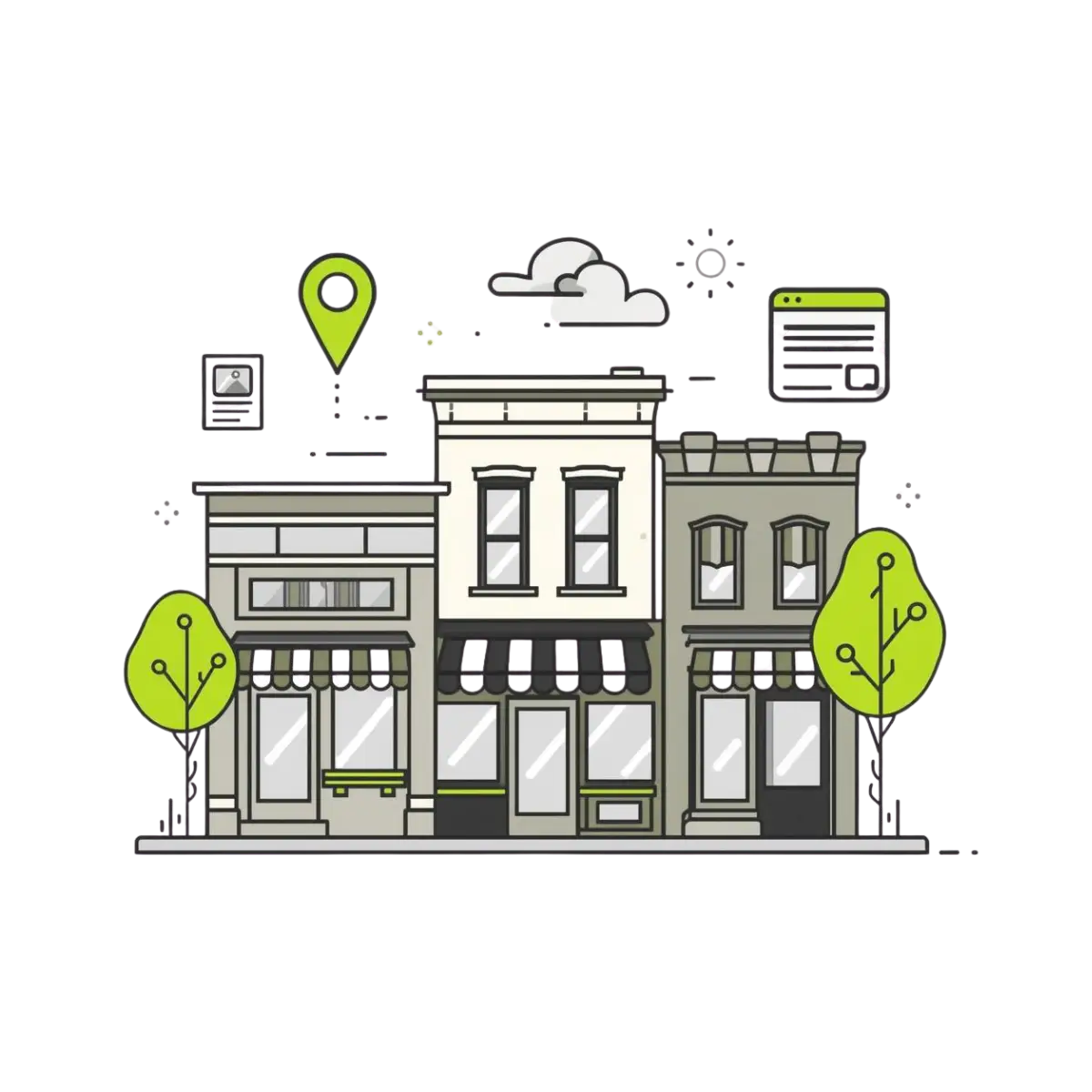November 17, 2025
SEO Content Marketing for Local Businesses: A 90 Day Action Plan

For local business owners, being the best at what you do doesn’t automatically fill your calendar with appointments. Your biggest challenge isn’t getting referrals; it’s getting consistent business that doesn’t rely on them. While your competitors are fumbling with expensive Google Ads and fighting for scraps on lead-gen sites, you have a massive opportunity to build a real, ownable asset: a content engine that makes you the undeniable authority in your town.
This isn’t a guide about quick-fix SEO tricks on Google Maps. This is a 90-day action plan to build a simple, effective content machine on your own website. We’ll show you how to stop just “having a website” and start using it to publish practical content that answers the real questions your community is asking… building so much trust and authority that picking up the phone to schedule with you becomes the only logical next step.
Why Local Businesses Need a Specialized SEO Content Strategy
For most local business owners, “marketing” means paying for something that promises immediate results. This leads to a heavy reliance on channels like Google Ads, Yelp, or lead-generation services like Angi. The problem with this approach is that you’re in a constant bidding war, effectively “renting” your customers from a third-party platform. You’re not building any long-term, ownable asset that can generate business for you consistently and cost-effectively.
A real SEO content strategy is how you take back control and build that asset. It allows you to use your own website to answer the specific questions your local customers are searching for, from “how much does it cost to fix a leaky faucet in [Your Town]” to “best time of year for landscape design in [Your State].” By publishing practical, helpful content that proves your local expertise, you build trust and visibility in your community, ensuring that you’re not just another name on a list, but the go-to expert that customers find and choose directly.
3 Reasons Why SEO Content Marketing Matters for Local Businesses
1. It Builds Trust and Authority in Your Local Community
For a local business, trust is your most valuable asset. A content strategy allows you to build that trust digitally before a customer ever contacts you. Your content’s job is to prove you are a knowledgeable, reliable, and active member of your community, making you the obvious and safe choice over a faceless national chain or an unknown competitor.
This is achieved by publishing practical, helpful content that demonstrates your local expertise, such as:
- Answering common questions specific to your area (e.g., “Best grass type for Texas heat”).
- Showcasing before-and-after photos of local projects or customer testimonials.
- Creating guides to show Google that you are an authority, so they display you more than competitors.
This approach establishes you as the go-to local expert, not just another business listing.
2. It Generates a Consistent Stream of Qualified Local Leads
The goal is to create a predictable flow of new business that doesn’t depend on expensive ads or unreliable lead-gen services. A smart content engine consistently attracts local customers who are actively searching for the exact services you provide, often with an immediate need.
This is accomplished by creating content that targets “near me” and location-specific searches, including:
- Detailed service pages for each of your offerings (e.g., “Emergency Plumbing in [Your Town]”).
- Blog posts answering cost-related questions (“How much does [your service] cost in [Your City]?”).
- Pages dedicated to each neighborhood or town in your service area.
This strategy ensures that when a local resident has a problem, your business is the solution they find first.
3. It Creates a Long-Term, Ownable Marketing Asset
Unlike a Google Ad that disappears when you stop paying, or a Yelp profile you don’t fully control, the content on your own website is a marketing asset that you own forever. Every article you publish is a permanent digital signpost that can attract customers for years to come.
You are building a valuable asset that:
- Works for you 24/7, generating leads even when you’re on the job.
- Builds value over time as it gains authority and ranks for more keywords.
- Gives you independence from third-party platforms and their rising costs.
This turns your website from a simple expense into one of your business’s most valuable, appreciating assets.
90-Day SEO Content Marketing Action Plan for Local Businesses (3 Phases)
For a local business, your biggest advantage is your deep knowledge of your community and your craft. The goal of the first 90 days is not to create a few perfect, slickly-produced web pages, but to go from “no data” to “some data” as quickly as possible. This data will show you what your neighbors are actually searching for when they need your help.
This is a bias-to-action plan. We’ll focus on a simple setup and maximum output, getting you into the rhythm of publishing helpful, local content and then using data to refine, not the other way around.
Phase 1: Setup & First Content Sprint (Days 1-30)
Your goal is to establish a rhythm of creation and go from zero strategy to a data-producing content machine.
- Week 1: The 60-Minute Setup
- Your goal is to get “good enough” tools running, not a complex, expensive stack.
- Install Google Search Console: This is non-negotiable. It’s how you’ll get direct feedback from Google on what’s working.
- Install Google Analytics: Just get it collecting data. You don’t need complex dashboards yet.
- Keyword Tool: You don’t need a paid tool yet. Use Google itself. Type in “plumber near me” and see what “People also ask” questions appear. That’s your starting point.
- Week 1: The Mindset Shift & Ideation
- Your new model is to think and create in local-problem clusters of 5-10 articles at a time. Don’t get lost in keyword research; your best ideas come from the questions your customers ask you every day.
- Brainstorm Your First Cluster (Start with What You Know):
- Common Customer Questions: “How Much Does [Your Service] Cost in [Your Town]?”
- “Is it worth it?” Questions: “Is it Worth Repairing My [Item] or Should I Replace It?”
- DIY vs. Pro: “When to DIY vs. Call a Professional for [Your Service]”
- Local Problems: “How to Deal with [Common Local Problem, e.g., Hard Water] in [Your County]”
- Find Programmatic Opportunities: This is your secret weapon. If you write “Our [Service] in [Neighborhood A],” you can easily create versions for “[Neighborhood B],” “[Neighborhood C],” and every other area you serve.
- Weeks 2-4: Your First Content Sprint
- Execute the Cluster: This is the most important step. Write and publish your first cluster of 5-10 articles. Aim for 80% good and 100% published. You can come back to add photos from a recent job later.
- Interlink Everything: As you publish, make sure your page for “[Neighborhood A]” links to your main service page, and vice-versa. This tells Google how your content is related.
- No Heavy Promotion: The goal is to get the content live and indexed by Google so it can start gathering data on what your local customers are searching for.
Phase 2: Analyze & Amplify (Days 31-60)
Your goal is to use the first wave of imperfect data to make your next content sprint smarter and more targeted.
- Week 5: The First Data Check-In
- Open Google Search Console and look at “Performance.” You now have real-world data.
- Find Your “Accidental Winners”: Look for pages getting impressions, even if they aren’t on page one. Is your page for a specific neighborhood getting shown? Is the article about “cost” getting impressions? This data is gold—it’s your community telling you what they care about.
- Weeks 6-8: The “Amplify” Sprint
- Launch the Second Cluster: Based on your “accidental winners,” write and publish your next batch of 5-10 articles. If your “cost” article got impressions, write more articles answering specific cost-related questions.
- The 90-Minute Tweak: Go back to your first cluster. For the 1-2 articles that showed the most promise, spend 90 minutes improving them. Add some photos from a relevant local job, add a testimonial from a customer in that neighborhood, or update the title to be more specific.
Phase 3: Systemize & Scale (Days 61-90)
You now have a proven rhythm. The goal is to make it repeatable and more efficient.
- Weeks 9-10: Build Your Content Machine
- Create a Content Database: Use a simple spreadsheet to create a list of content ideas. Have columns for the topic, the target neighborhood or service, and the status (“Idea,” “Writing,” “Published”). This is your simple system for staying organized.
- Launch Your Third Cluster: Execute another content sprint. By now, you’ve published 15-30 articles and have a significant amount of initial data to guide your decisions.
- Weeks 11-12: Level Up Your Strategy Game
- The machine is running. Now, it’s time to get smarter.
- Deep Dive into Local SEO: Look at the top-ranking local businesses for your main service. Are their Google Business Profiles fully filled out? Are they getting lots of reviews? This isn’t just about your website; it’s about your entire local presence.
- Refine Your Next Cluster with Data: Use the insights from your analysis to plan your next content cluster. Maybe you need more content for a specific, profitable service line, or maybe you need to create pages for a new town you want to expand into.
- Plan the Next 90 Days: Review all your data. You have a baseline for phone calls and a much better understanding of what your local community needs. Your plan for the next quarter is clear: continue the content sprints, but now with a sharper focus on the services and locations that generate the most business.
Using AI to Get Content Done Faster (and Cheaper)
The 90-day plan you just read is designed to get you results, but as a business owner, your time is your most valuable asset. This is where simple, modern AI tools can be a game-changer. Think of AI not as some complicated technology, but as a tireless, low-cost assistant who can help you get your marketing done in a fraction of the time.
The wrong way to use AI is to ask it to “write a blog post about plumbing” and just copy-paste the result. This creates generic content that sounds like a robot and won’t build trust with your local customers. The right way is to use it to handle the grunt work, so you can focus on adding your personal, local expertise.
A Simple AI Workflow for a Busy Business Owner
Get Ideas in Seconds: Instead of staring at a blank page, just ask the AI for help.
- Tell the AI: “I’m a plumber in [Your Town]. Give me 20 blog post ideas that local homeowners would find helpful.”
- This instantly gives you a list of topics to choose from.
Create a “Good Enough” First Draft: Let the AI do the initial writing for you.
- Tell the AI: “Write a simple blog post about ‘5 signs you have a hidden water leak’ for a homeowner audience.”
- This gets you 80% of the way there in about 30 seconds.
Add Your Local Expertise (The Important Part): This is where you quickly turn the generic draft into something that builds real trust. Spend 15 minutes adding your unique touch.
- Add a Local Touch: Mention a specific neighborhood you work in or a common problem you see in [Your Town]’s older homes.
- Add a Personal Story: Include a quick, one-sentence example from a recent job. (“Just last week, we found a leak in a home in the [Neighborhood Name] area that started just like this.”)
- Add Your Voice: Read it out loud and make sure it sounds like you.
The Bottom Line: You Still Need a Plan
Even with AI making the writing easier, you still need a simple plan to follow. You need to know what topics will actually attract local customers and have a process to get it done consistently. AI is a great tool, but it can’t run your marketing for you.
This is where having a dedicated partner can handle the entire process, from strategy to final publication, so you can focus on what you do best: running your business.
(This leads directly into your standard CTA section)
Ready to Take Your SEO & GEO Rankings to the Top?
Request your free site audit, and we’ll even include a sample article created for your business to get an idea of what we can produce for you at scale.
Blog
Explore Our Latest Articles
November 17, 2025
SEO Content Marketing for Financial Services: A 90 Day Action Plan from Zero

Read Article
November 17, 2025
SEO Content Marketing for Professional Services: A 90-Day Plan for Creating a Library of Expertise

Read Article
October 8, 2025
SEO Content Marketing for B2C SAAS: A 90 Day Action Plan from Scratch

Read Article
Ready to Take Your SEO & GEO Rankings to the Top?
Request your free sample article created for your business to get an idea of what we can produce for you at scale.
